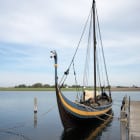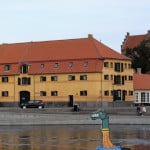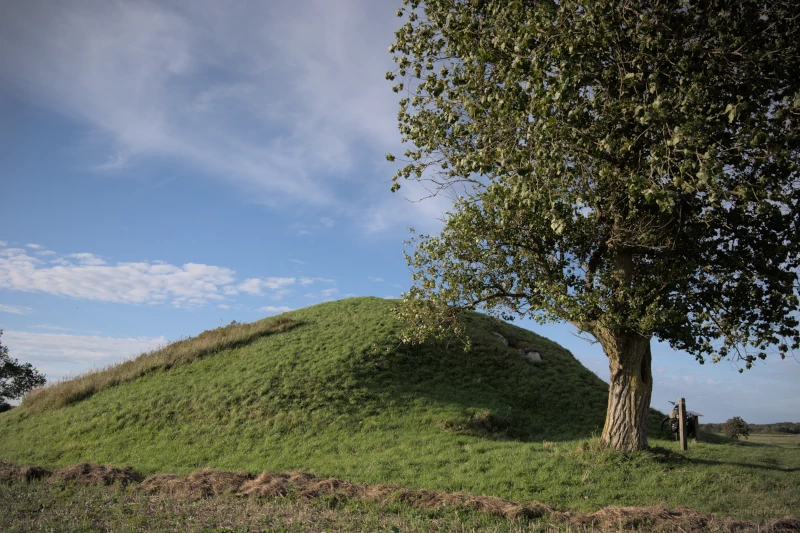
If you are traveling on the Danish island of Funen, you can travel back in time in just a few steps. The Mårhøj burial mound with its well-preserved passage grave from the Neolithic period is an impressive testimony to the building skills and burial culture of the time. From the outside a rather inconspicuous grassy mound in the landscape of the north-eastern Fyn peninsula of Hindsholm, a low passageway gives the brave visitor an insight into the past of around 5000 years ago. Don’t forget a flashlight or candles – only a few rays of daylight reach the depths of the burial chamber!
By bike via Hindsholm to the Mårhøj passage tomb
As my arrival in Kerteminde unfortunately fell on a Monday, when all the real museums in the world are closed, I looked for possible adventures in the surrounding area. You can experience and „cycle“ all sorts of things on Funen by bike and the Hindsholm peninsula to the north of Kerteminde promised sights and natural beauty that were also accessible on Mondays. I had already made a note of the Mårhøj passage grave from a travel guide as a possible destination in the region, and the advice to „bring a flashlight“ naturally made things even more exciting. So I declared Monday afternoon a „Stone Age excursion“ and cycled from Kerteminde in a north-easterly direction.
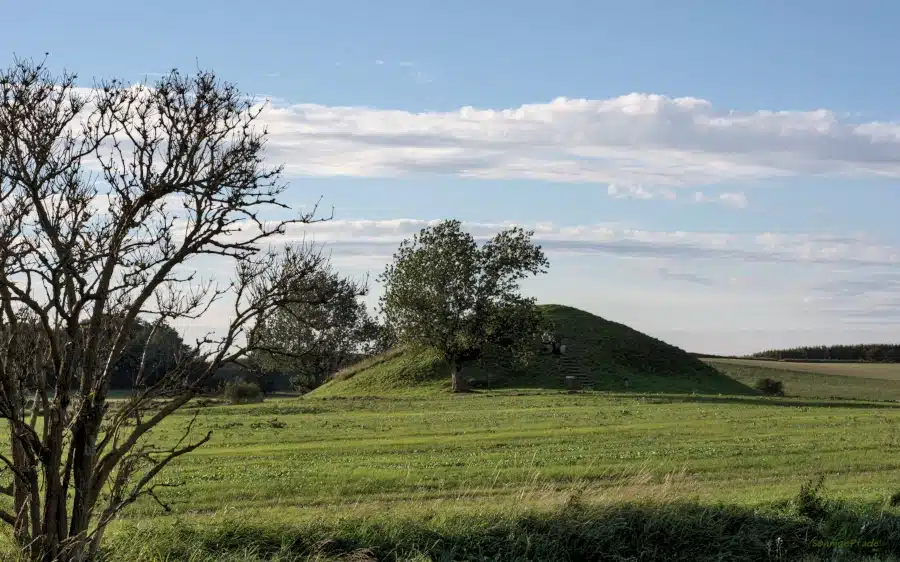
The development of Mårhøj as a monument
Twenty years after the discovery, Mårhøj Jættestue (Danish for passage grave) was also registered by the official Danish monument authorities. In 1888, Baron C. Brockdorff recorded the round barrow near Martofte as a Stone Age passage grave from the period between 3950 – 2801 B.C. The barrow was built as an extension on a natural slope or elevation. The burial chamber is approx. 10 m long and just under 2 m wide, approx. 1.60 m high and surrounded by 18 supporting stones. Seven capstones form the roof of the chamber.
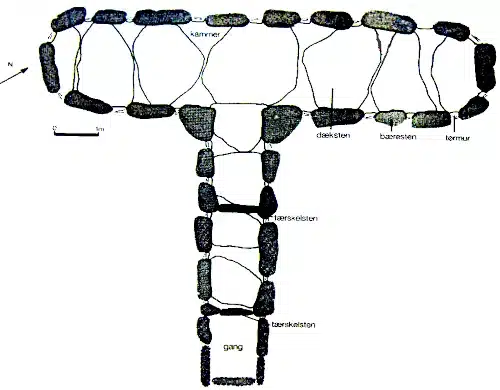
The passage had 14 supporting stones, three of which are missing. The foremost of probably 5 capstones has disappeared today. The passage, also known as a passage house, was closed with two slabs. The construction of the passage tombs is attributed to the Funnel Beaker Culture.
The urn mentioned in the discovery story is thought to be a prehistoric cremation burial from 1100 BC to 375 AD (late Bronze Age or Iron Age).
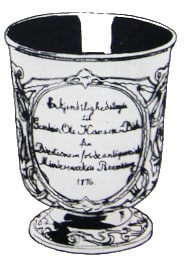
A large proportion of Danish archaeological monuments, such as the Mårhøj burial mound, are freely accessible. As early as the 19th century, the monument authorities made agreements with the landowners. For example, the landowners at Mårhøj Jættestue were compensated by the Danish state for free access to the monument with a silver cup.
Visit to the Mårhøj Jættestue mound
Exploring Mårhøj Jættestue was also an experience for me. The hill is actually a lonely spot in a field. From the narrow road, a trail leads about 200m across the recently harvested field. A single tree is the long-lasting flower at the grave. A flight of wooden steps set into the embankment leads to the opening of the passage. Anyone with claustrophobic tendencies will probably turn around as soon as they see the narrow entrance, surrounded by thick boulders. Hunched over, you enter the interior of the hill.
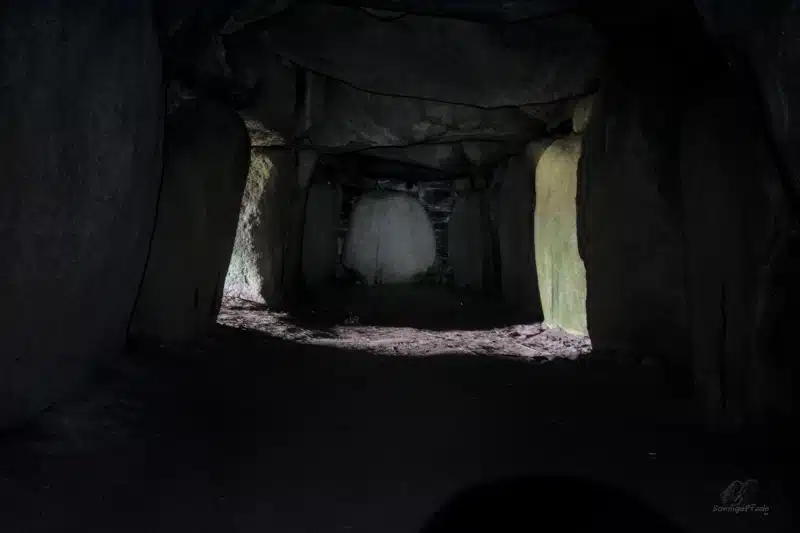
I was even more moved by the fact that these stones were put together 5000 years ago to form the passage and this chamber. But everything looks very solid! In the burial chamber, which is only illuminated by a few rays of light through the long corridor, there was a fresh bouquet of flowers on the left. An apple was probably intended as an offering. The burial chamber is slightly higher than the corridor, but even as a relatively short person, I can’t stand upright.
Cups of burnt-out tea lights with their modern design and obsolescently inadequate use of wax detracted a little from the journey through time. Own candles would certainly have improved the atmosphere inside the earth – but you should remove the garbage yourself at the end. Unfortunately, I only had my headlamp, less romantic. But I wouldn’t have imagined it to be that big. There were solid craftsmen at work! Is that why the Stone Age is called the Stone Age? In the dark chamber deep underground, shielded from all the noises of today’s hectic world, you can actually travel back in time and imagine what it might have looked like when this hill was raised and the stones were put together. For me, the moments at Mårhøj Jættestue are among the highlights of this island bike tour in Denmark.
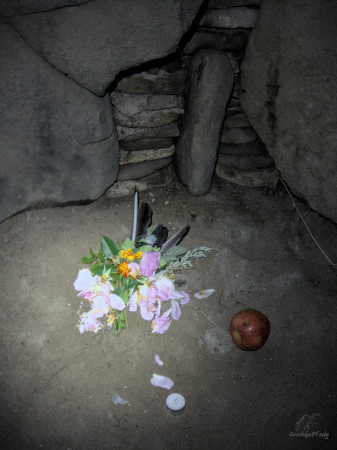
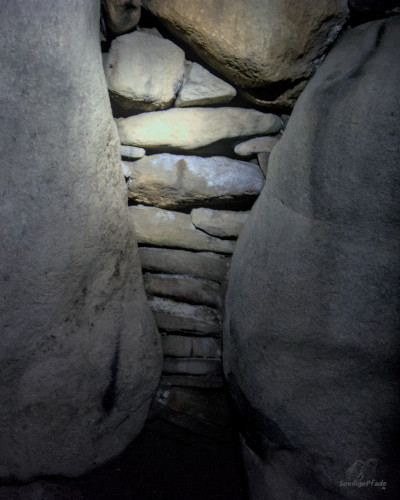
Megalithic tombs in the wider Martofte area
Mårhøj tomb is not the only burial mound on the Hindsholm peninsula. There are several other megalithic sites in the vicinity of Martofte. However, these are not nearly as impressive as Mårhøj Jættestue and are often located on fenced or otherwise separated private land. Snave’s round dyke is located at Stubberup, just over 1 km further along the narrow residential road to the northeast. You can get there, but I couldn’t see more than an overgrown mound of earth at the Snave Dyssekammer, as it is called in Danish.
If you drive a little further north on the main road 315, you might find three more round mounds near the village of Brockdorff.
In addition to the Snave Runddysse, I also tried to find the Hesthøj (horse mound) east of Martofte on Søvej. The path was quite beautiful with its quaint-looking poplar trees, but the property with the Hesthøj was fenced in and guarded by two very agile black dogs, who commented on my every move with fierce barking. ‚Dogs that bark don’t bite? I don’t feel like risking the seat of my pants to test the truth of this saying…
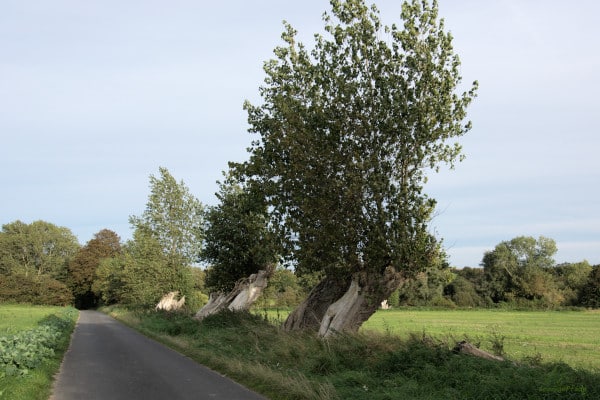
By bicycle on the road between Mårhøj and Kerteminde
Hverringe Manor
As I wanted to avoid the main road (315) as much as possible – although the traffic was reasonably limited – I first drove east cycling along the banks of the Great Belt after leaving Kerteminde. This is possible on narrower roads. First came a stretch of forest where the pheasants were frolicking at the edge. I noticed this at several forest edges: Dozens of pheasants. Behind the forest is Hverringe Manor, which probably owns the forest with its pheasants and all the land around it. There is also a 5** campsite on the Belt beach. Hverringe Manor was first mentioned in 1350
The island of Romsø has been part of the estate since 1607. The imposing main building of Hverringe Manor dates back to 1790.
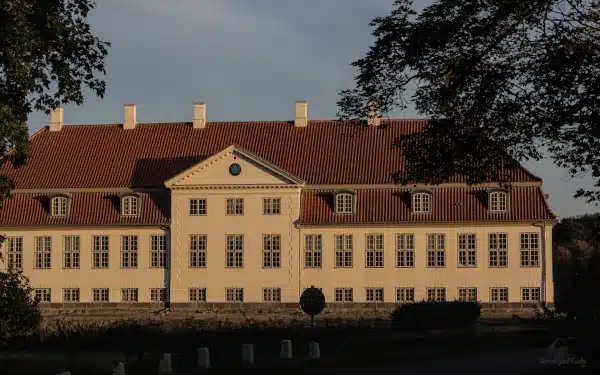
Viby and Viby Mølle
I was impressed by the village of Viby with its many well-preserved half-timbered houses and the mill top of a hill on the edge of the village. As there is hardly any car traffic in the village, you can enjoy the peace and quiet in Viby and feel like you’ve stepped back a century. Viby Mølle was built in 1873 to replace a mill that had caught fire due to a lightning strike. A mill guild is responsible for the maintenance and operation of the mill. The mill is open from the end of June to the end of August on Sundays until around 5pm. The entrance fee is 20DKK. For visits outside opening hours, appointments can be made by calling +45 21587390 or sending an e-mail to gormthor@outlook.dk. There is a beautiful view from the mill hill.
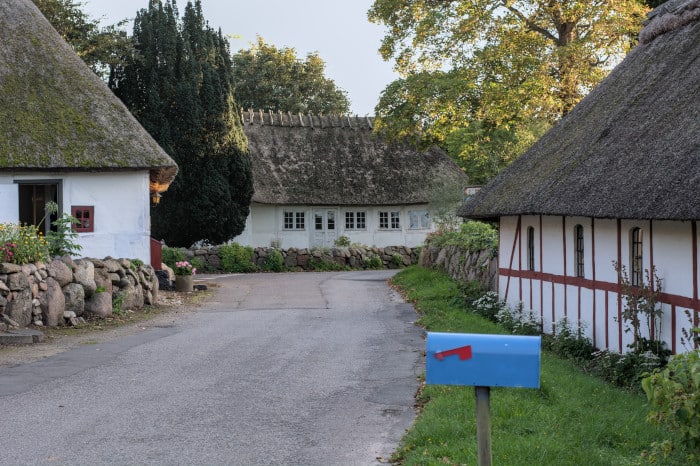
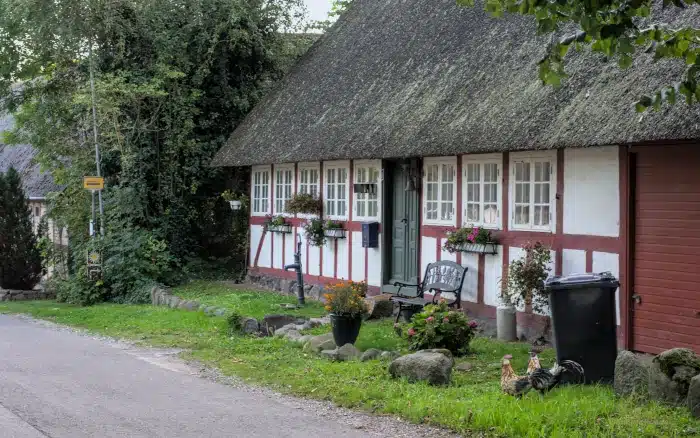
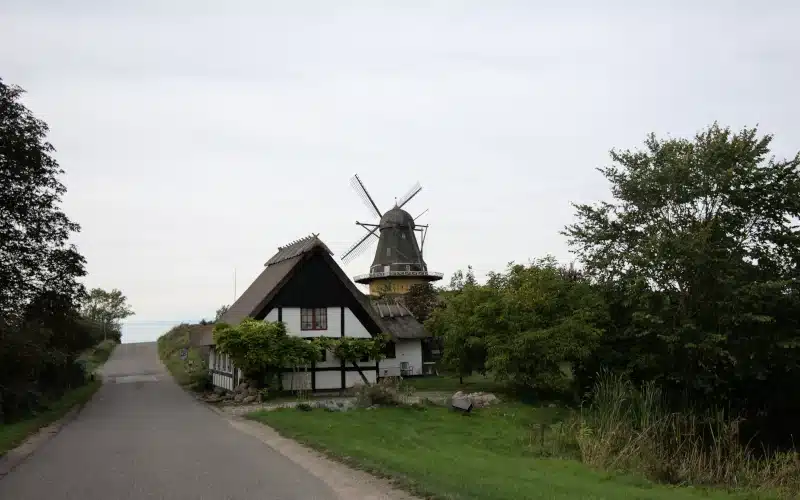
The landscape is relatively flat and easy to manage by bike. The side roads are quiet. You can also avoid the main road 315 between Dalby and Martofte – there is a cycle path via Stubberup that runs along an old railroad line. Unfortunately, I was somewhat limited towards the end of my cycle tour due to the advancing autumn season. Otherwise, I would certainly have enjoyed exploring the Hindsholm peninsula even further and continuing to the northern tip with the cape and spit. This region also offers interesting, species-rich areas for nature lovers.
Travel tips for Mårhøj and the Hindsholm peninsula
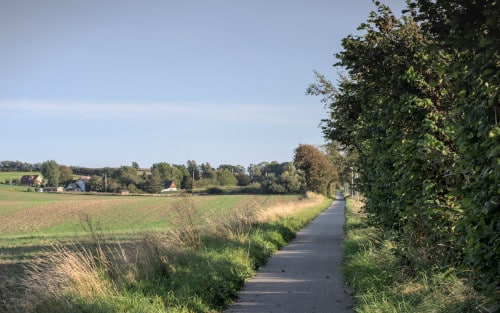
If you would like to find out about travel, weather and other attractions in the region, you can find this information on the separate website for Kerteminde – travel tips.
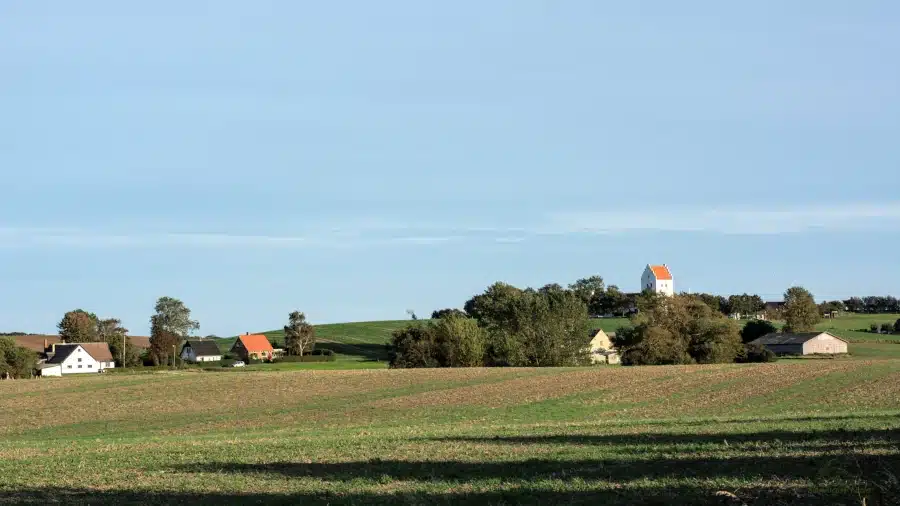
More adventures on the island of Funen?
A ship grave from the Viking Age – The Ladby Ship
Kerteminde – Tranquil old town at the Great Belt
The dolmens of Lindeskov and the medieval ramparts of Magelund Voldsted

Nyborg town and castle – fortress of a strengthening Denmark *The Olsen Gang is here too!

